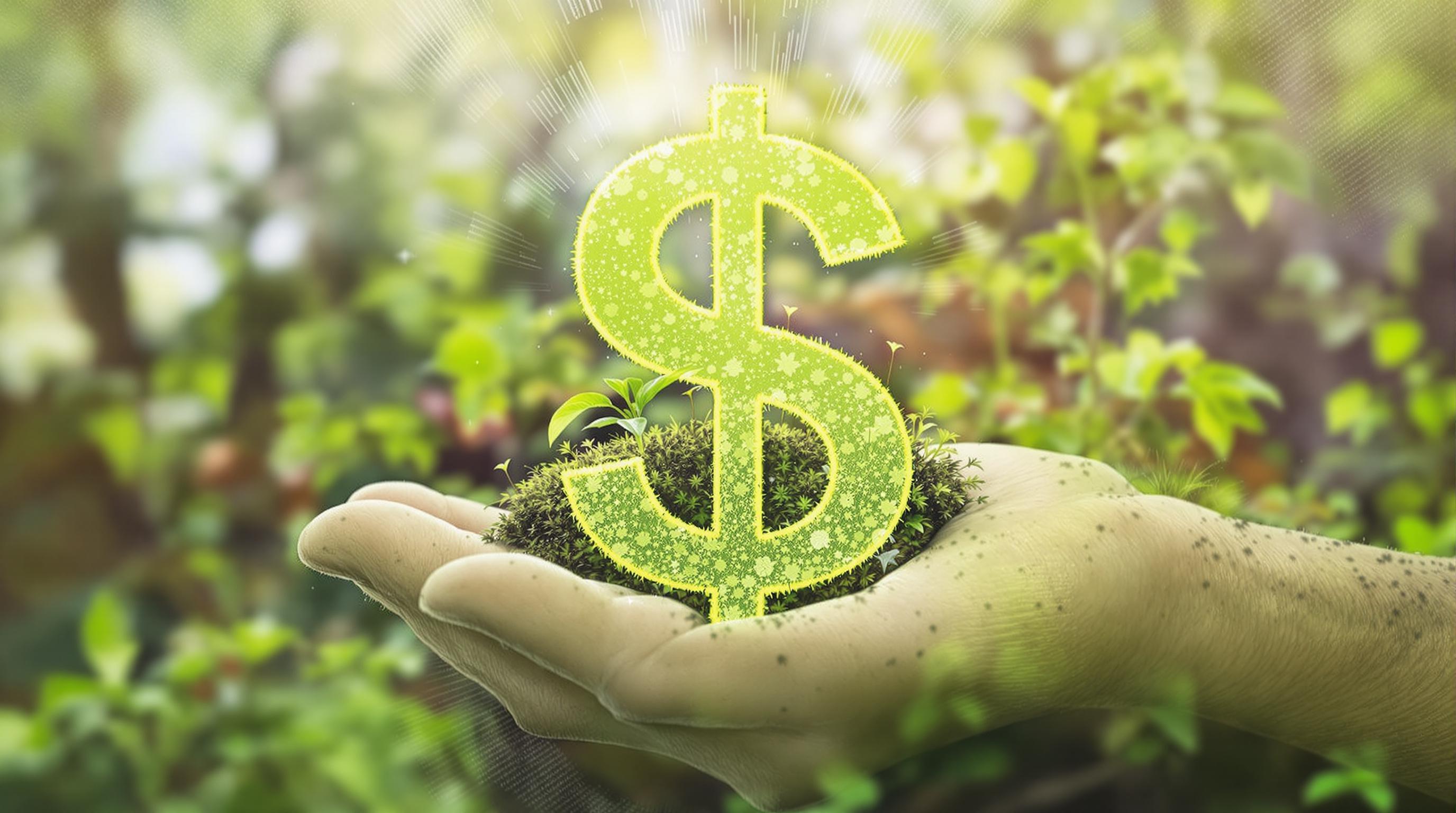Related Articles
- How Climate Change Litigation Is Reshaping International Investment Risk Assessment and Capital Flows
- 7 Revolutionary Smart Home Investments from the Last Five Years That Generate Steady Passive Income in 2024
- How Virtual Reality Is Changing Family Conversations About Inheritance and Future Financial Transparency
- The Influence of Seasonal Affective Disorder on Designing Adaptive Support Networks for Mental Wellness
- Top 5 Game-Changing Green Bonds Released Since 2019 Disrupting Conventional Sustainable Finance Models
- 6 Groundbreaking Global Robo-Advisors Unveiled Since 2019 Transforming Automated Wealth Management
Top 5 Game-Changing Green Bonds Released Since 2019 Disrupting Conventional Sustainable Finance Models
Top 5 Game-Changing Green Bonds Released Since 2019 Disrupting Conventional Sustainable Finance Models
Green bonds have redefined sustainable finance since 2019, spearheading new paradigms that blend environmental impact with robust financial returns. This article charts the top five groundbreaking green bonds that have not only disrupted conventional models but also set ambitious standards for future investments.
The Rise of the Luxembourg Green Bond: A Gateway for Global Investors
Debuted in 2019, Luxembourg introduced a sovereign green bond that swiftly attracted a diverse pool of international investors. What made this bond stand out was its transparency and the rigorous third-party verification process, ensuring that funds were strictly allocated to projects promoting renewable energy, energy efficiency, and waste management.
According to the Climate Bonds Initiative, Luxembourg’s green bond issuance totaled €600 million, successfully raising the benchmark for liability disclosure in sustainable bonds. This bold maneuver encouraged smaller nations to consider green finance tools without overwhelming market impacts. It also emphasized the power of credibility in transforming green bonds from niche investments to mainstream options.
Brazil’s Green Bond: Between Amazon Preservation and Economic Growth
When Brazil announced its first green bond in 2020, the goal was ambitious: to protect vast swathes of the Amazon rainforest while simultaneously stimulating economic growth. This bond raised $2 billion in funds aimed at forest conservation projects and clean energy infrastructure.
The initiative directly tackled a conflict that many nations face—balancing environmental stewardship with economic aspirations.
An interesting statistic illustrates its impact: deforestation rates in pilot areas decreased by 15% within just two years as a result of improved surveillance and sustainable local practices funded by the bond proceeds. This was a clear signal that the fusion of sustainable finance with direct ecological outcomes could succeed at scale.
Persuasive Power of the Apple Green Bond in Corporate Sustainability
Apple’s foray into green bond issuance was a watershed moment in corporate sustainable finance. Issuing $2.2 billion worth of green bonds from 2019 to 2021, Apple channeled investments into energy-efficient data centers, solar projects, and recycling technologies. Their leadership exemplified how corporate giants can pivot financial strategies to align profit with planetary purpose.
What makes Apple’s bond exceptional is the company’s extensive reporting and stakeholder engagement practices, which set new standards for corporate transparency in sustainability. The company’s Environmental Progress Reports detail the impact, providing investors with granular data on emissions reductions and circular economy advances.
Indeed, fostering investor trust and demonstrating tangible impact has proven essential in convincing financial markets of sustainable bonds’ viability beyond token gestures.
Conversational Insights: Why the World Needs More Green Bonds like Germany’s Transit Revolution
Alright, let’s chat about Germany’s green bond that came onto the scene in 2021, targeting their ambitious transition to carbon-neutral public transportation. Ever tried imagining a world where your daily commute contributes to clean air rather than smog? This bond raised €1.5 billion, funding electric buses, rail electrification projects, and new charging infrastructure. Pretty cool, huh?
This initiative isn’t just about being green; it’s about reimagining how transit systems can seamlessly combine efficiency with sustainability. If you ask me (and you kind of did by reading this), Germany’s model shows that targeted, well-structured green bonds can genuinely alter urban life quality while driving forward carbon reduction goals. Plus, they’ve made the experience of sustainability quite tangible, which makes it easier for citizens and investors to get behind.
China’s Green Bond Market: The Catalyst for Asia’s Green Revolution
China’s explosive growth in green bond issuance since 2019 has reshaped Asia’s sustainable finance landscape. By 2022, China accounted for over 30% of the global green bond market, issuing bonds worth more than $80 billion focused on clean energy, pollution control, and sustainable transportation.
This dominance has several causes: massive urbanization, government policies favoring clean tech, and growing investor appetite for ESG-focused assets. A notable example includes the Shanghai Municipal Government’s green bond program, which funds projects ranging from green buildings to water conservation updates.
Although some critics argue that transparency and certification standards remain a challenge in certain cases, the sheer scale of China’s issuance has undeniably encouraged innovation in harmonizing environmental goals with financial returns, inspiring other emerging markets to follow suit.
A Humorous Take on Green Bonds – The Unexpected Financial Superheroes
Imagine green bonds as caped crusaders of the financial world—no, really! They swoop in, saving forests, greening cities, and battling pollution with the mighty power of investor funds. Since 2019, these financial heroes have stopped the evil villain of “business-as-usual” polluting investments in their tracks.
Some might say, “Bonds are boring,” but the green ones add a dash of comic-book excitement to the mix. They’re like Batman financing solar panels on Gotham’s rooftops—pragmatic, mysterious, but undeniably cool. This playful perspective might help younger investors see these instruments not just as numbers but as real agents of change.
Case Study: The Impact of Social Inclusion in Green Bond Projects
One critically overlooked facet of these new green bonds is their emphasis on social inclusion. For example, the Mexican Green Bond initiatives since 2020 have integrated community-based projects designed to ensure marginalized groups benefit from clean energy transitions.
Projects funded by these bonds supported solar energy microgrids in rural areas while providing educational programs on sustainable agriculture. This dual approach improved local livelihoods as well as environmental outcomes, showcasing the importance of combining environmental with social objectives.
Surveys revealed that 85% of the communities involved reported better access to energy and increased income, demonstrating how green bonds can serve as instruments of equity, not just ecology.
Changing the Narrative: Why Conventional Sustainable Finance Models are Being Disrupted
Traditional sustainable finance often relied on broad ESG funds and corporate social responsibility pledges that infrequently translated into measurable impact. The top green bonds since 2019 challenge this by providing clear project-level accountability, verified performance indicators, and direct links to environmental goals.
Moreover, these bonds offer market liquidity and set market benchmarks that encourage competition and innovation. Investors no longer have to choose between financial returns and environmental stewardship—they can have both. This shift is critical in catalyzing the transition to low-carbon economies.
Ultimately, these bonds exemplify an evolution from aspirational goals to operationalized, measurable finance that works for people and planet alike.
Conclusion: The Future of Green Bonds
Looking forward, the trajectory set by these five game-changing green bonds points to an increasingly sophisticated and competitive market. Innovation in bond structures, enhanced reporting, and integration of social outcomes will define the coming years.
Whether you are a young investor curious about making a real-world difference or a seasoned financial professional seeking impactful opportunities, the landscape of green bonds since 2019 offers exciting promise. As Elizabeth, a 56-year-old historian who has witnessed financial revolutions and environmental awakenings, I can attest that this fusion of finance and ecology marks a profound turning point in the story of our planet’s stewardship.




